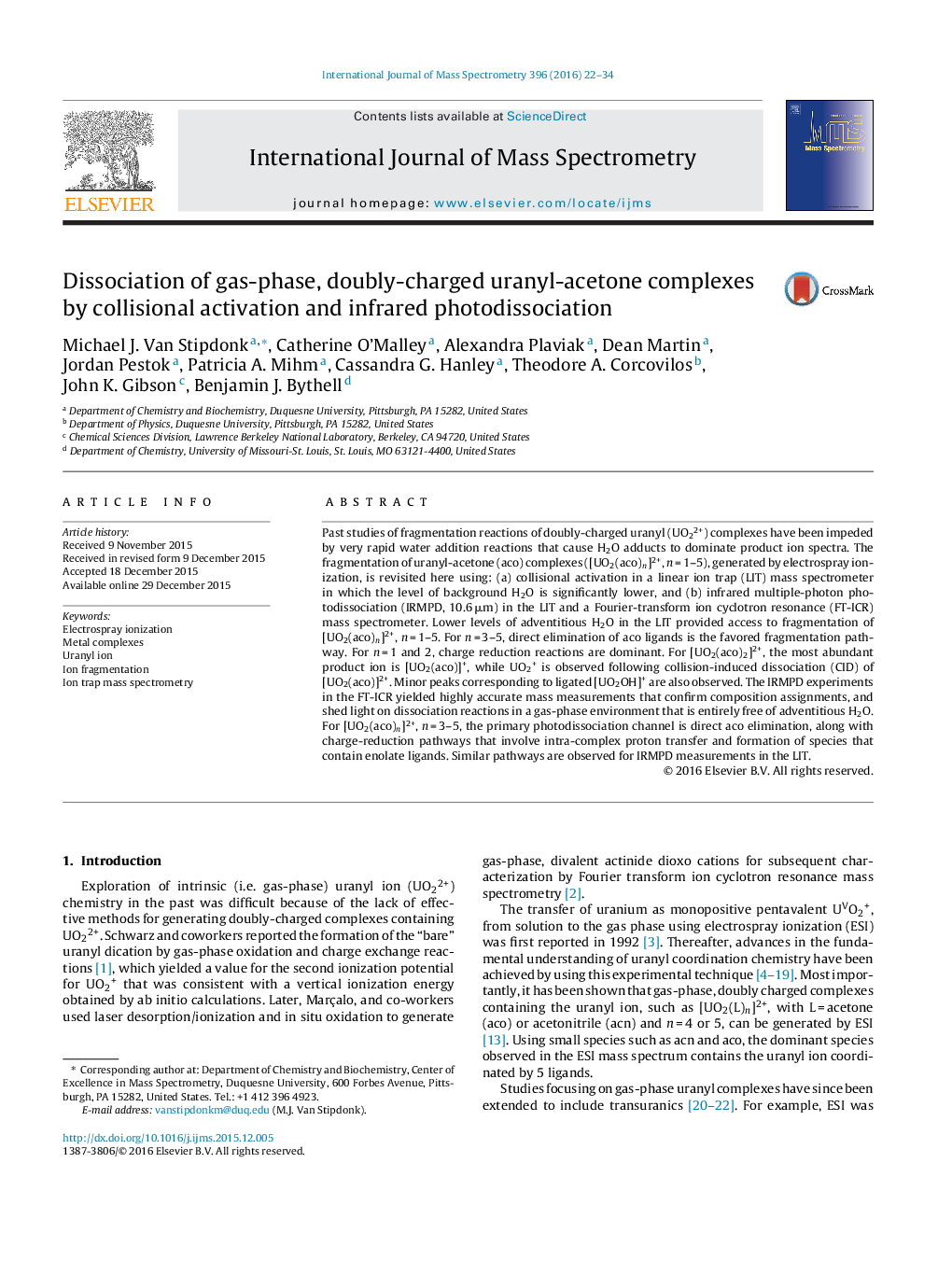| Article ID | Journal | Published Year | Pages | File Type |
|---|---|---|---|---|
| 1192712 | International Journal of Mass Spectrometry | 2016 | 13 Pages |
•CID of acetone coordinated uranyl dication using linear ion trap and FT-ICR MS.•Low H2O content of ion trap allows CID of [UO2(aco)n]2+, n = 1–5, to be investigated in detail using serial, multiple-stage CID.•CID, isotope labeling and IR photodissociation reveal new fragmentation pathways, including formation of uranyl-alkyl species.
Past studies of fragmentation reactions of doubly-charged uranyl (UO22+) complexes have been impeded by very rapid water addition reactions that cause H2O adducts to dominate product ion spectra. The fragmentation of uranyl-acetone (aco) complexes ([UO2(aco)n]2+, n = 1–5), generated by electrospray ionization, is revisited here using: (a) collisional activation in a linear ion trap (LIT) mass spectrometer in which the level of background H2O is significantly lower, and (b) infrared multiple-photon photodissociation (IRMPD, 10.6 μm) in the LIT and a Fourier-transform ion cyclotron resonance (FT-ICR) mass spectrometer. Lower levels of adventitious H2O in the LIT provided access to fragmentation of [UO2(aco)n]2+, n = 1–5. For n = 3–5, direct elimination of aco ligands is the favored fragmentation pathway. For n = 1 and 2, charge reduction reactions are dominant. For [UO2(aco)2]2+, the most abundant product ion is [UO2(aco)]+, while UO2+ is observed following collision-induced dissociation (CID) of [UO2(aco)]2+. Minor peaks corresponding to ligated [UO2OH]+ are also observed. The IRMPD experiments in the FT-ICR yielded highly accurate mass measurements that confirm composition assignments, and shed light on dissociation reactions in a gas-phase environment that is entirely free of adventitious H2O. For [UO2(aco)n]2+, n = 3–5, the primary photodissociation channel is direct aco elimination, along with charge-reduction pathways that involve intra-complex proton transfer and formation of species that contain enolate ligands. Similar pathways are observed for IRMPD measurements in the LIT.
Graphical abstractFigure optionsDownload full-size imageDownload high-quality image (133 K)Download as PowerPoint slide
